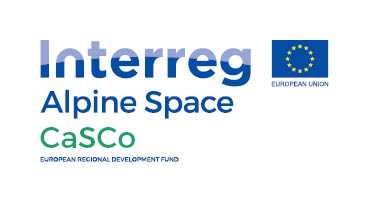Environmental labels
Environmental labels are instrumental for the EU’s sustainable procurement processes. With products growing in variety and the supply chains becoming more global and less transparent, environmental labels are gaining in importance and their use is recommended by the EU.
An environmental label gives the municipality and the planning authority a guarantee of verifiable compliance and certification to the tender requirements without them having to search for and collect extensive documentation for every delivery or purchase made. Control is an essential element of sustainable procurement in Europe.
When running a tender, the most important thing for the municipality is to check what it can achieve in terms of sustainability. However, every environmental label focuses on different parameters. None of the labels covers all aspects of sustainability equally. That is why it would be sensible to regulate multiple environmental label criteria.
It is also important that we want to have European environmental labels. The current EU regulations should be considered a status quo and the basis for further development. In terms of environmental impact, eco-labels are stricter than DIN standards or EU Regulations (e.g. Due Diligence) but do not replace them.
In procurement processes, the municipality cannot rely on the manufacturer’s statements but must require evidence. Environmental labels are not just a sign of the municipality’s sustainable procurement but also a great opportunity to control the ecological criteria in the tender. Only if these criteria are met, the desired environmental effect can be achieved.
The advantages of EU environmental labels
The „European environmental labels“, are labels that were created in the European judicial are where they are applied, and comply with the EU regulations formulated in accordance with the legal requirements. The labels which originate from or are mostly used outside the European judicial area it needs to be verified whether the products meet all the EU rules, such as the REACH Regulation.
Example 1: Organotin compounds are prohibited or subject to threshold values in the EU under the REACH Regulation, but in the US they continue to be used in production. Example 2: PCP has been banned in Germany for a long time but in Asia, the substance is still contained in many products (including some that still reach the EU market).
Environmental label and the lifecycle
Environmental labels are used in different product lifecycle phases. Some in the supply chains, others in the application phase. Practically no label has so far referred explicitly to the time after finished use, which is pretty logical as the possibility of reuse after fifty years is hard too imagine now. Certainly, the manner and ecological compatibility of subsequent use also depends on the material used.
The role of specific product lifecycle phases depends on the group of products and can vary considerably. In products like construction materials, building elements, internal building elements, furniture, wall coverings and floorings, the supply chain has a decisive influence on the carbon performance evaluation of a product also with regard to the building. These product groups are inert in the phase of usage, which means they do not consume energy, water or raw materials. The contracting authority can therefore influence the flow of goods and the ecological performance of the supply chain. In the next chapter, environmental labels will be described , with special emphasis paid tot he importance of eco-labelling of lifecycle phases.
Relevant European environmental labels
In the Alpine Space the following environmental labels refer to timber and construction products. These labels have been selected and recommended by relevant platforms, organisations and institutions (given in alphabetical order):
Blauer Engel (blauerengel.de).
Cradle to Cradle (epea.com).
Europäisches Umweltzeichen (eu-ecolabel.de).
FSC (fsc.de).
HOLZ VON HIER (holz-von-hier.de).
NaturePlus (natureplus.org).
Nordic Swan (nordic-ecolabel.org).
Österreichisches Umweltzeichen (umweltzeichen.at).
PEFC (pefc.de).

